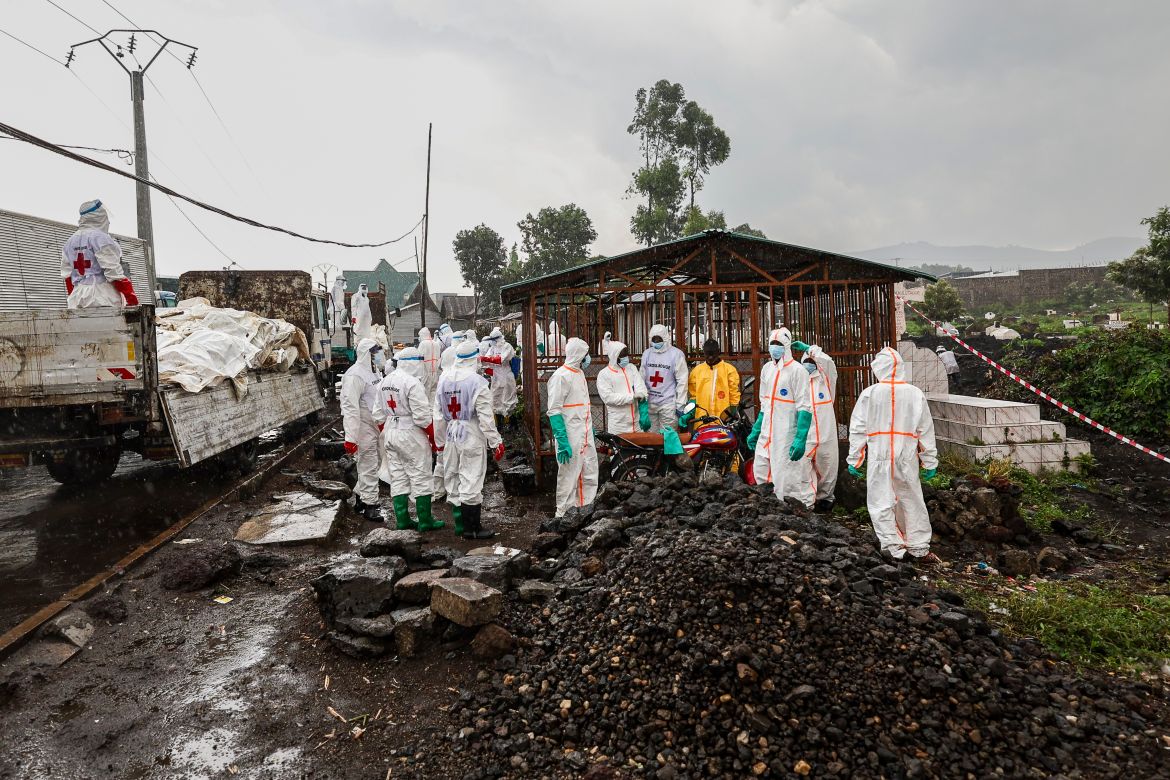Goma Residents Race to Bury 2,000 Bodies Amid Ceasefire
The streets of Goma, a city in the eastern Democratic Republic of the Congo (DRC), bear the scars of last week’s intense battles. As a fragile ceasefire holds, residents, aid workers, and the Congolese Red Cross are racing against time to bury thousands of victims, fearing the spread of disease from bodies left in the open and in overcrowded morgues.
The recent wave of violence, fueled by clashes between the Rwanda-backed M23 rebels and government forces, has left Goma devastated.
Official reports indicate that at least 900 people were killed and nearly 3,000 injured as the rebels fought for control of the city. The actual toll could be even higher as more bodies continue to be discovered.
“We are overwhelmed. So many bodies have been brought in that we have run out of space,” said Myriam Favier, head of the International Committee of the Red Cross sub-delegation in Goma.

Members of the Congolese Red Cross & volunteers bury victims of the conflict in a cemetery in Goma.
With power outages affecting refrigeration at morgues, decomposition has set in, forcing urgent mass burials. The challenge is compounded by the lack of burial land in the city, putting additional strain on grieving families.
Beyond the mounting death toll, countless civilians are still reeling from the horrors of war. Julienne Zaina Barabara, a resident of the Katoyi neighborhood, recounted how an explosive hit near her home, killing one of her children and wounding two others.“We took them all to the hospital where one of them died after three hours,” she said tearfully.
“The other two are still receiving treatment. One still has shrapnel lodged in his head.”Overwhelmed hospitals continue to treat the wounded with limited supplies, while displaced families scramble for food and shelter.
Despite the ceasefire declared by the M23 rebels on Monday, the city remains tense. Sporadic gunfire and looting were reported in some areas on Tuesday, raising concerns about the truce’s durability.
Businesses that had shut down during the fighting have begun reopening, while displaced families cautiously return home. Schools, however, remain closed, and water shortages persist, forcing children to line up at distribution points.
The crisis in Goma has drawn international attention, with humanitarian agencies calling for urgent intervention to prevent further suffering. The UN and aid groups continue to provide medical care, shelter, and food, but the scale of destruction has made relief efforts difficult.
“The humanitarian needs are enormous,” said an aid worker on the ground. “We need more support to help those who have lost everything.”
As the people of Goma bury their dead and pick up the pieces, the world watches, hoping that this ceasefire will bring lasting peace to a region long plagued by conflict.
Stay updated with Daily West Nile for more coverage on the situation in the DRC.
Join the Daily West Nile WhatsApp group now to never miss an update from us.Download Host Media Now from the Play Store to watch HostTV, listen to Host Rad